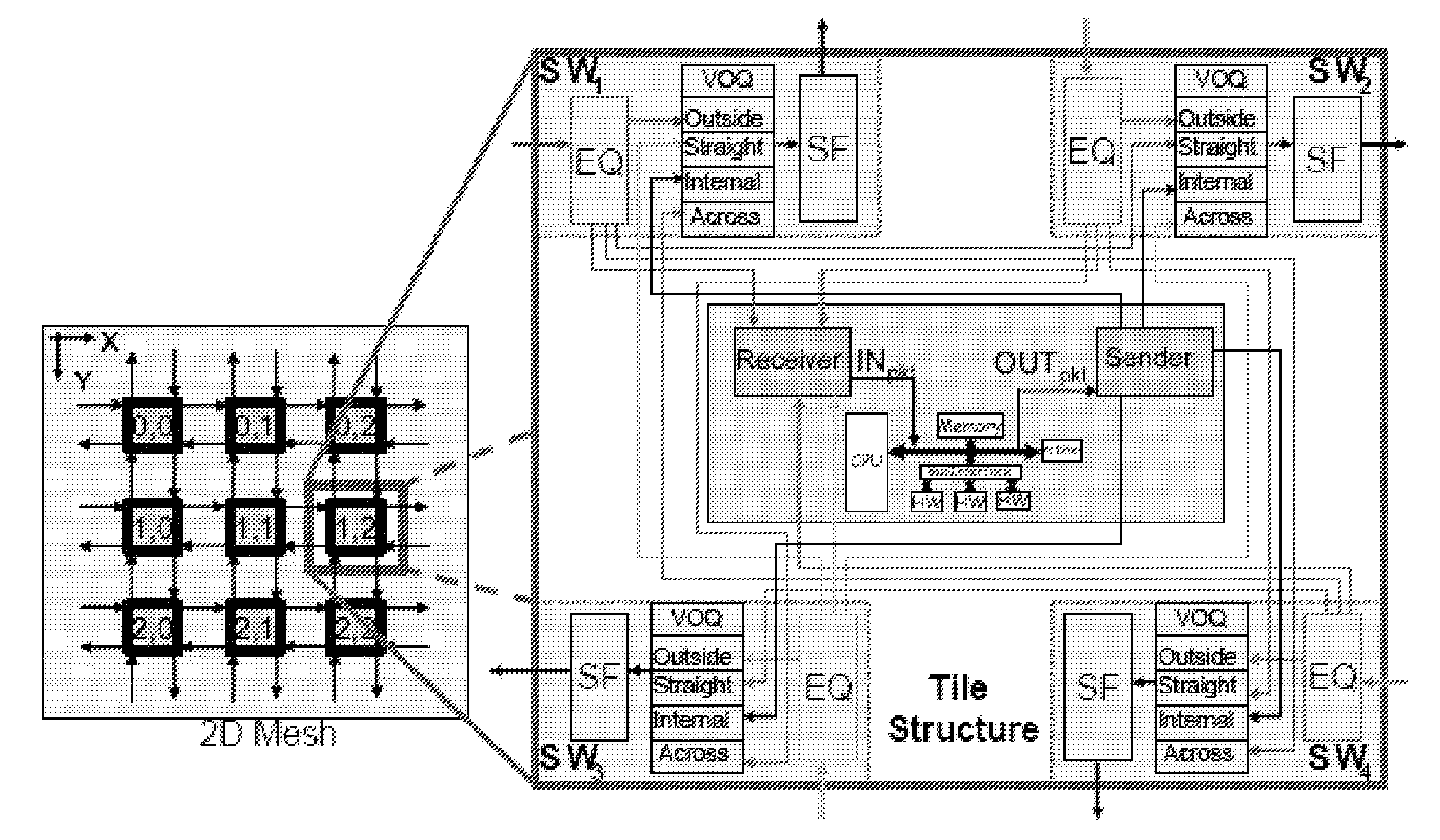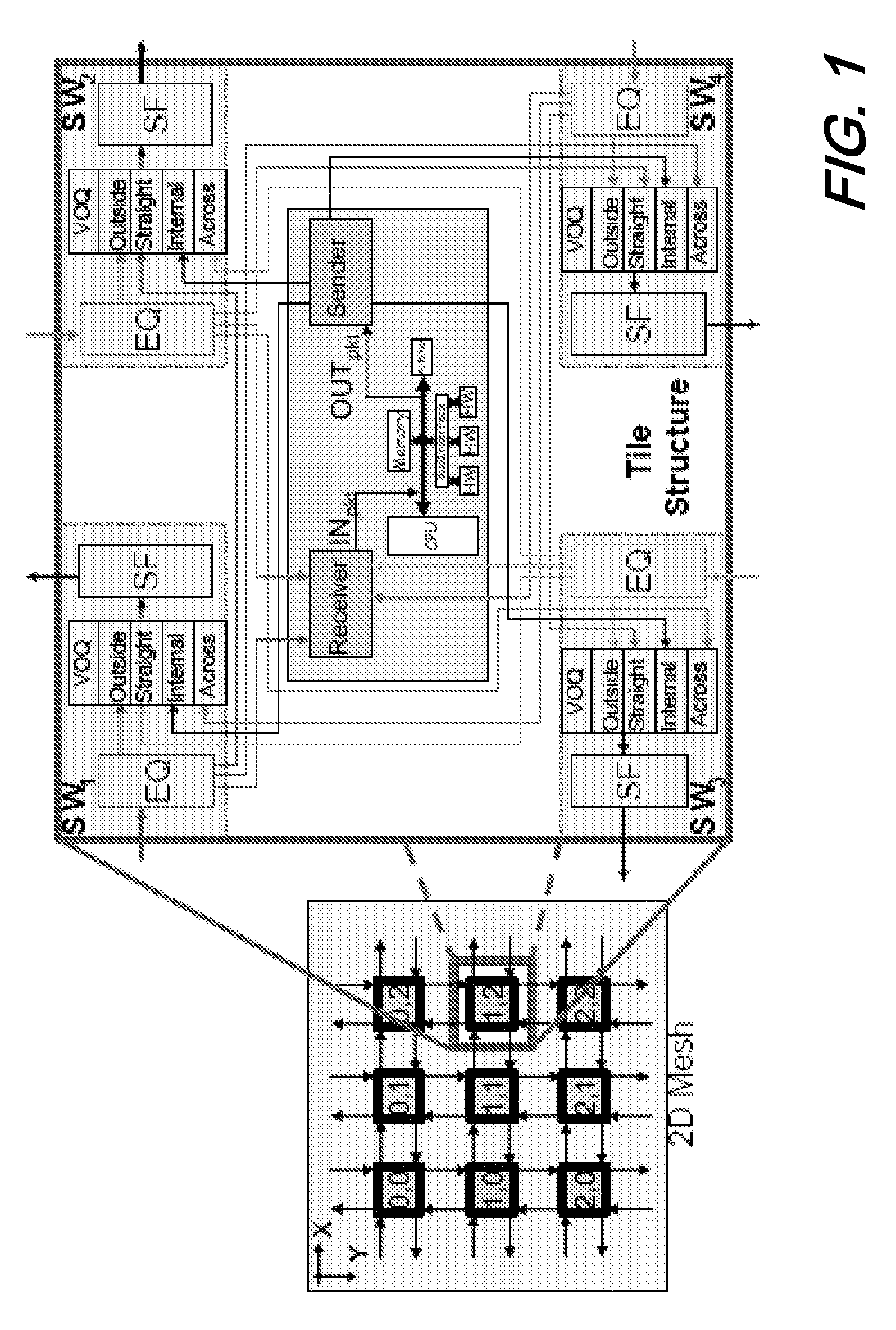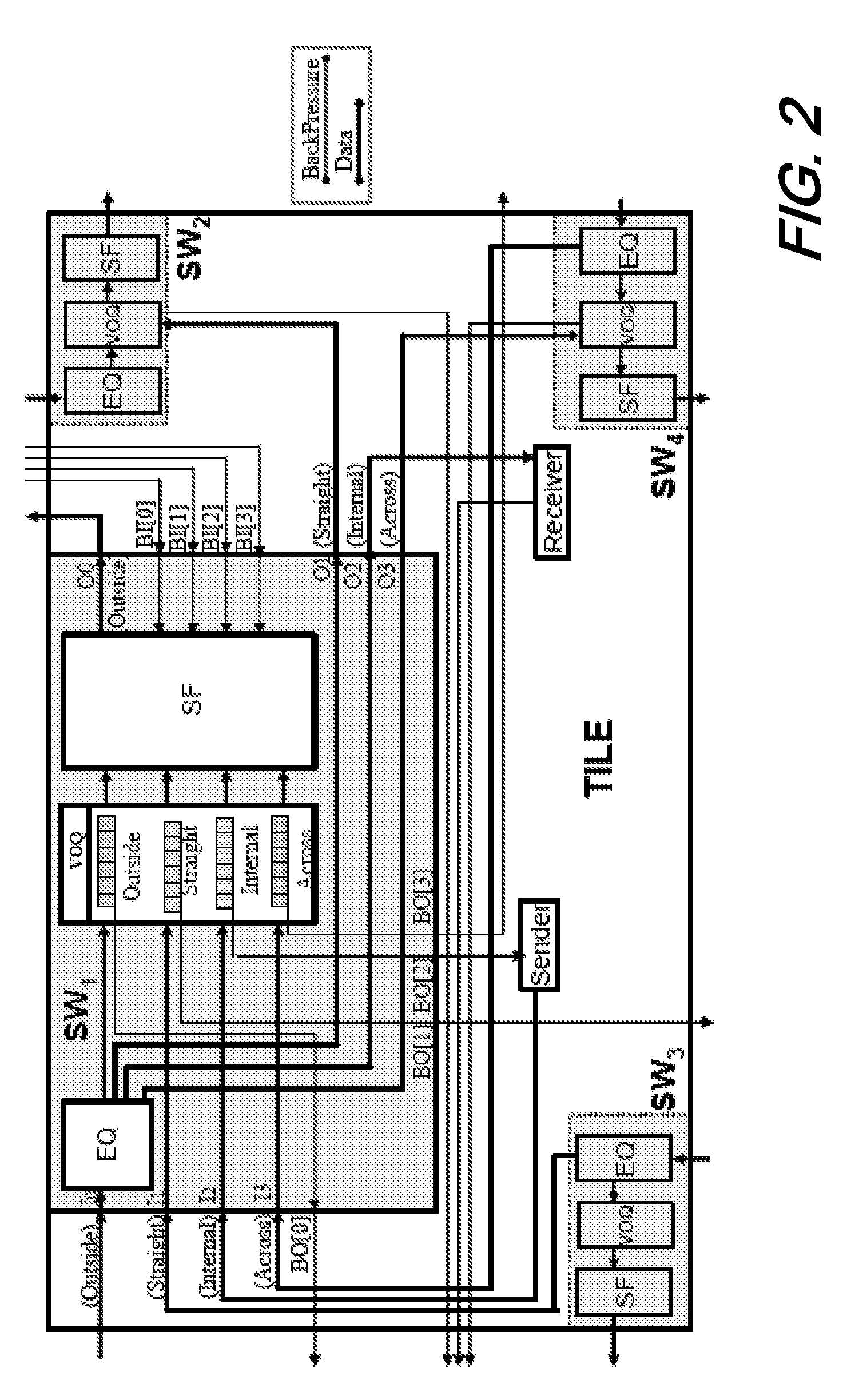Flexible wrapper architecture for tiled networks on a chip
a flexible wrapper and network technology, applied in data switching networks, pulse techniques, instruments, etc., can solve problems such as large integrated circuits, and achieve the effect of increasing communication efficiency and preserving chip spa
- Summary
- Abstract
- Description
- Claims
- Application Information
AI Technical Summary
Benefits of technology
Problems solved by technology
Method used
Image
Examples
experiment 1
Threshold
[0051]A first experiment demonstrates with the effect of BP threshold values on the NoC fabric. In this first experimental condition, all queue sizes were fixed to eight packets and BP threshold values were set to 6, 4 and 2 packets. As the BP threshold value was decreased from 6 to 2, the average end-to-end latency for both the flow decreased from 33 cycles to 14 cycles. This effect can be justified by the fact that large BP threshold values delay the propagation of congestion information through BP signals. This causes packets to wait longer in their queues.
[0052]FIG. 4 shows a latency chart for flow (a) in three different configurations, represented by four parameter values: Queue sizes (except internal queue), Internal queue size, BP threshold value (except internal queue) and BP threshold value for internal queue. Configurations used for this figure were 8-8-6-6, 8-8-4-4, and 8-8-2-2. The number of packets in the outside (flow a) and in the across (flow b) queues grows...
experiment 2
[0054]A second experiment explores the effect of queue size on NoC fabric. In this experimental setup, the BP threshold values were fixed to two packets and measurements were taken at queue sizes of 8, 6, 4, 3 and 2 packets. FIG. 6 shows the end to end latency for configurations: 8-8-2-2, 6-6-2-2 and 4-4-2-2. Reducing the queue size from 8 to 4 had no effect on NoC characteristics and produced exactly identical latency charts. Queue sizes 3 and 2 resulted in packet loss by the EQ module. This is because when BP signal is set the immediately previous SF module or BP signal is set the immediately previous SF module or sender module stops sending further packets until BP signal is reset. Hence queue size needs to be sufficiently large to accommodate packets that are still sent while the BP signal propagates. In our model queue size needs to be at least two more than BP threshold value.
experiment 3
c
[0055]A third experiment explores burst traffic conditions. Flow (b) was modified to generate a periodic burst instead of sustained traffic. A reduction in BP threshold reduces the BP propagation time. The advantage is a faster reaction to increased congestion, but a disadvantage is an increased sensitivity of the sender to intermittent burst traffic conditions that could have been absorbed better without alternating routes too frequently. The solution is to keep the threshold values low but to shield the sender from temporary congestions caused by sporadic traffic anomalies. This was achieved by increasing the BP threshold value of internal queues from 2 to 6.
[0056]This required an increase in the internal queue size because it was established in the second experiment that queue size needs to be at least two more than its BP threshold value. With an increase of the BP threshold value for the internal queue, the number of packets taking the alternate route decreased (See, FIG. 7). ...
PUM
 Login to View More
Login to View More Abstract
Description
Claims
Application Information
 Login to View More
Login to View More - R&D
- Intellectual Property
- Life Sciences
- Materials
- Tech Scout
- Unparalleled Data Quality
- Higher Quality Content
- 60% Fewer Hallucinations
Browse by: Latest US Patents, China's latest patents, Technical Efficacy Thesaurus, Application Domain, Technology Topic, Popular Technical Reports.
© 2025 PatSnap. All rights reserved.Legal|Privacy policy|Modern Slavery Act Transparency Statement|Sitemap|About US| Contact US: help@patsnap.com



